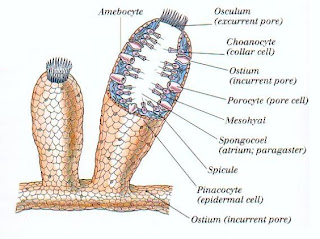Parasite of the Day provides quite a bit of the latter, with glimpses into the lives of parasites and their seemingly-cruel ways of making a living. The most recent post features a fungus that turns ants into lock-jawed zombies. There are plenty of such sordid tales, but it is the surprising and varied mechanisms that I find fascinating. These are “surprising” only because they are discoveries that turn our too-simple ideas about organismal evolution on their heads. As technology and new methods allow us to to look where we could not look before, such discoveries are being made at accelerating rates.
 |
| Pine wilt, courtesy Missouri Botanical Garden. |
Have a look at November 3rd’s post about Bursaphelenchus xylophilus, a nematode. This parasite causes pine wilt disease, but only by enlisting the help of longhorn beetles and a suite of genes for cellulase for breaking down plant lignin that it somehow “inherited” from ... fungi! Yes, you read correctly ... could this be horizontal gene transfer between an animal and a fungus?
 |
| Faust tempted by Mephistopheles, G. Bizet |
If you are a fan of nematodes, don’t miss It's Nematodes All the Way Down at Catalog of Organisms. Halicephalobus mephisto lives in 'fracture water', the water present in rock fractures well below the surface. This particular nematode was found 1.3 km below the surface when a fracture and water were exposed by gold mining. This is not the first discovery of life far below the surface but rather the deepest record for an animal. Bacteria are known from deep fracture water and may be the food of the 'demon' nematode (H. mephisto suggests the demon of German folklore, Mephistopheles).
The Atavism has an interesting series on our relatives without backbones: Sunday Spinelessness. The post on June 5 is all about placozoans (‘flat animals’) -- very thin transparent films of cells with no real tissues.
 |
| Courtesy Oliver Voight at Creative Commons. |
Until recently it was assumed that this thinness allowed diffusion to play the role of our complicated G-I tract and circulatory system, but further investigation has revealed cellular specialization. The placozoan can create a “stomach” when needed by gluing itself to a surface and arching over it’s food. It then secretes digestive proteins (exodigestion) and drinks the resulting smoothie ... well kind of ... actually pinocytosis:
 |
| Feasting placozoan. |
The Artful Amoeba (Scientific American blogs) shares some great video footage of placozoans -- I especially enjoyed seeing them dancing feeding (set to cool music). The focus of the post is the ability of placozoans to sense oxygen, perhaps providing a glimpse into the Cambrian explosion.
I became an ardent fan of The Artful Amoeba by way of an earlier post on Sponges: The Original Animal House. There is great beauty among the sponges, as the photos show.
 |
Sponges in 60 feet of water: yellow tube sponge,purple vase sponge, red encrusting sponge, gray rope sponge. Caribbean Sea, Cayman Islands. Twilight Zone Expedition Team 2007, NOAA-OE.
|
Like placozoans, sponges have no true tissues but rather specialized cells including epidermal cells, wandering amoeboid cells with digestive and immune-like roles, cells with flagella that help pump water through the sponge, and others:
There is at least one advantage to having cells that are specialized but not locked into tissues -- a sponge can be run through a filter to produce a disorganized mass of cells that then reassociate to create a new sponge! TAA finishes with stories about several of the more curious sponges. This is a lengthy post, but a fascinating one that is well-worth the time needed for a careful read.

No comments:
Post a Comment